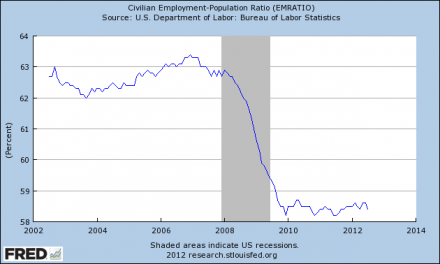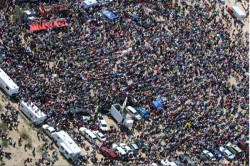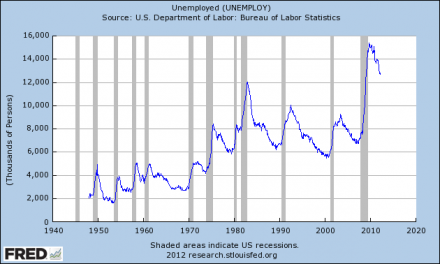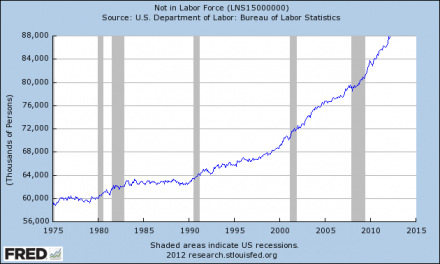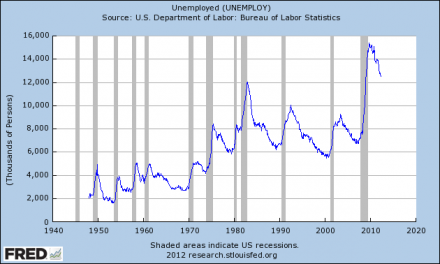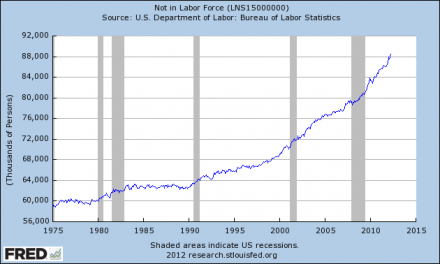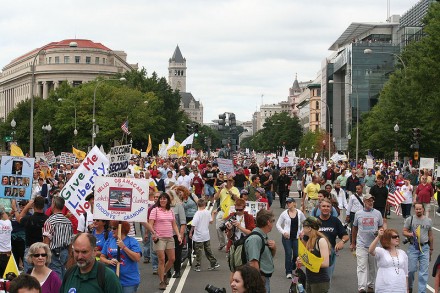 Is the U.S. economy steamrolling toward another recession? Will 2014 turn out to be a major “turning point” when we look back on it? Before we get to the evidence, it is important to note that there are many economists that believe that the United States never actually got out of the last recession. For example, data compiled by John Williams of shadowstats.com show that the U.S. economy has continually been in recession since 2005. So if anyone out there would like to argue that America is experiencing a recession right now, I certainly would not have a problem with that. In fact, that would fit with the daily reality of tens of millions of Americans that are deeply suffering in this harsh economic environment. But no matter whether we are in a “recession” at the moment or not, there are an increasing number of indications that we are rapidly plunging into another major economic slowdown. The following are the top 12 signs that the U.S. economy is heading toward another recession…
Is the U.S. economy steamrolling toward another recession? Will 2014 turn out to be a major “turning point” when we look back on it? Before we get to the evidence, it is important to note that there are many economists that believe that the United States never actually got out of the last recession. For example, data compiled by John Williams of shadowstats.com show that the U.S. economy has continually been in recession since 2005. So if anyone out there would like to argue that America is experiencing a recession right now, I certainly would not have a problem with that. In fact, that would fit with the daily reality of tens of millions of Americans that are deeply suffering in this harsh economic environment. But no matter whether we are in a “recession” at the moment or not, there are an increasing number of indications that we are rapidly plunging into another major economic slowdown. The following are the top 12 signs that the U.S. economy is heading toward another recession…
#1 We recently learned that the number of new mortgage applications in the United States had fallen to the lowest level that we have seen in nearly 20 years.
#2 Radio Shack has announced that it is going to close more than 1,000 stores. This is just another sign that we are in the midst of a “retail apocalypse“.
#3 The ISM Services index just fell to its lowest level in 4 years, and ISM Services Employment just experienced its largest decline since the collapse of Lehman Brothers.
#4 Obamacare is really starting to hammer the U.S. health care industry…
“The Affordable Care Act is creating significant financial uncertainty to health care organizations,” said a survey respondent from the health care and social assistance industry.
“With little warning, the negative impact on revenue has been unprecedented.”
#5 Trading revenue at the “too big to fail” banks on Wall Street is way down…
Citigroup Inc. (C) and JPMorgan Chase & Co. (JPM) are bracing investors for a fourth straight drop in first-quarter trading, a period of the year when the largest investment banks typically earn the most from that business.
Citigroup finance chief John Gerspach said yesterday his firm expects trading revenue to drop by a “high mid-teens” percentage, less than a week after JPMorgan Chief Executive Officer Jamie Dimon said revenue from equities and fixed income was down about 15 percent. If trading at the nine largest firms slumps that much, it would extend the slide from 2010’s first quarter to 36 percent.
#6 One of the “too big to fail” banks, JPMorgan, is planning to fire “thousands” more workers.
#7 Moody’s has downgraded the credit rating of the city of Chicago again. Now it is just three notches above junk status.
#8 The U.S. economy actually lost 2.87 million jobs during the month of January according to the unadjusted numbers. Over the past decade, the only time the U.S. economy has lost more jobs during the month of January was in 2009 at the peak of the last recession.
#9 In January, real disposable income in the U.S. experienced the largest year over year decline that we have seen since 1974.
#10 Only 35 percent of all Americans say that they are better off financially than they were a year ago.
#11 Global retail sales for machinery giant Caterpillar have fallen for 14 months in a row.
#12 The economic data show that virtually all of the largest economies on the planet are slowing down right now. The following is from a recent Zero Hedge article…
The last 3 weeks have seen the macro fundamentals of the G-10 major economies collapse at the fastest pace in almost 4 years and almost the biggest slump since Lehman. Despite a plethora of data showing that ‘weather’ is not to blame, US strategists, ‘economists’, and asset-gatherers are sticking to the meme that this is all because of the cold on the east coast of the US (and that means wondrous pent-up demand to come). However, as the New York Times reports, for the earth, it was the 4th warmest January on record.
For much more on how the rest of the global economy is also slowing down, please see my recent article entitled “20 Signs That The Global Economic Crisis Is Starting To Catch Fire“.
Meanwhile, things in Ukraine continue to become even more tense, and the Russian government continues to debate how it will respond if the U.S. does end up deciding to hit Russia with economic sanctions.
According to one Russian news source, the Russian parliament is actually considering the confiscation of the property and assets of U.S. businesses in Russia if the U.S. decides to go ahead with economic sanctions against Russia…
The upper house of Russia’s parliament is mulling measures allowing property and assets of European and US companies to be confiscated in the event of sanctions being adopted against Russia over its threatened military intervention in Ukraine.
We are talking about banks, retail chains, mining operations, etc.
U.S. companies have billions invested in Russia, and all of that could be gone in an instant.
So let us certainly hope that economic war between the United States and Russia is averted. Our economy is hurting enough as it is.
But no matter how things with this crisis in Ukraine play out, it looks like hard times are ahead for the U.S. economy.
Unfortunately, most Americans never learned the lessons that they should have learned back in 2008.
They just assume that the federal government and the Federal Reserve have fixed our problems and have everything under control, so they are not preparing for the next great crisis.
In the end, tens of millions of Americans will be absolutely devastated when they get absolutely blindsided by what is coming.


